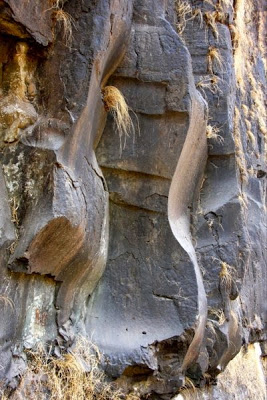
In a new paper published online by GSA Bulletin on 30 April, researchers Mark Richards and colleagues address the “uncomfortably close” occurrence of the Chicxulub impact in the Yucatán and the most voluminous phase of the Deccan Traps flood basalt eruptions in India. Specifically, the researchers argue that the impact likely triggered most of the immense eruptions of lava in India — that indeed, this was not a coincidence, but a cause-and-effect relationship.
Knowledge and study of the Deccan Traps eruptions have consistently cast a shadow of doubt on the theory that the Chicxulub impact was the sole cause of the end-Cretaceous mass extinction, most infamous for killing off Earth’s dinosaurs. But Richards and colleagues write that historical evidence for the triggering of volcanoes by large earthquakes, coupled with a wide range of data, show that the massive outpouring of Deccan lavas are likely to have been triggered by the Chicxulub impact — and thus following on as a secondary disaster.
“The chances of that occurring at random are minuscule,” says Richards. “It’s not a very credible coincidence.”
Several of the authors visited India in April 2014 to obtain lava samples for dating, and noticed that there are pronounced weathering surfaces, or terraces, marking the onset of the huge Wai subgroup flows. This geological evidence likely indicates a period of quiescence in Deccan volcanism prior to the Chicxulub impact, which, says Richards, “gave this thing a shake,” thus mobilizing a huge amount of magma over a short period of time.
Richards and colleagues write that while the Deccan eruptions probably spewed massive amounts of carbon dioxide and other noxious, climate-modifying gases into the atmosphere, “It’s still unclear if this contributed to the demise of most of life on Earth at the end of the Age of Dinosaurs.”
This article is open access online. Co-authors of the paper are Paul Renne, Michael Manga, Stephen Self, and Courtney Sprain, all from UC-Berkeley; Walter Alvarez, a UC-Berkeley professor emeritus and the co-originator of the dinosaur-killing asteroid theory; Leif Karlstrom of the University of Oregon; Jan Smit of Vrije Universeit in Amsterdam; Loÿc Vanderkluysen of Drexel University in Philadelphia; and Sally A. Gibson of the University of Cambridge, UK. Learn more about this team’s research via the UC-Berkeley newsroom.
Reference:
M. A. Richards, W. Alvarez, S. Self, L. Karlstrom, P. R. Renne, M. Manga, C. J. Sprain, J. Smit, L. Vanderkluysen, S. A. Gibson. Triggering of the largest Deccan eruptions by the Chicxulub impact. Geological Society of America Bulletin, 2015; DOI: 10.1130/B31167.1
Note: The above story is based on materials provided by Geological Society of America.










